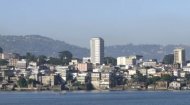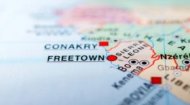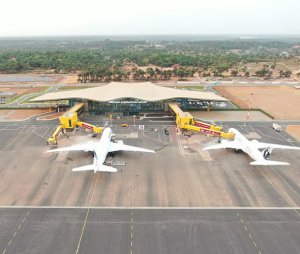|
Freetown Airport |
Freetown Airport |
Freetown Airport | Freetown Airport |
|
|

|
This accessibility is reflected in the airport's passenger numbers, which tell a story of growth and potential. Before the devastating Ebola outbreak in 2014, passenger traffic was on a steady upward trajectory, approaching nearly 300,000 passengers annually. The pandemic caused another significant dip, mirroring global aviation trends. However, the post-pandemic era has seen a strong and steady recovery. Traffic figures are climbing back as tourism returns and business travel resumes and today stand at 248,583 per annum. These numbers are more than just statistics; they represent families reuniting, investors exploring opportunities, and tourists discovering the country's white-sand beaches and lush rainforests. The government's focus on tourism development suggests that passenger numbers are poised for significant growth in the coming years, a prospect that necessitates ongoing investment in the airport's infrastructure. That infrastructure - the facilities within the terminal - is a key focus for improvement. Travellers will find a functional, if somewhat compact, international terminal. The check-in hall can get busy during peak times, although you will be asked for a helpful 'fee' to smoothly exit the facility. Refusal is taken in good heart even though your personal belongings will then be given even more rigorous scrutiny than normal, or required. After security, the international departure lounge offers a selection of basic amenities, including an over-proced duty-free shop selling local souvenirs and spirits, a couple of cafés serving refreshments, and a restaurant where the only vegetarian option is, er, well, chips, which coincidently is the main fare available to non-vegetarians as well as most other menu items are usually 'orf'. For those seeking comfort, there is a premium lounge available, typically accessed by business class passengers or through certain lounge membership programs. The arrivals hall is a space where the warm Sierra Leonean atmosphere is immediately apparent. On the landside, you'll find currency exchange bureaus, SIM card vendors, and car rental agencies. It is important to note that the airport's facilities are continually being upgraded. Recent and planned projects aim to modernise waiting areas, improve baggage handling systems, and enhance retail and dining options to provide a more comfortable and efficient passenger experience. The eight mile journey to Freetown is usually completed by ferry, hovercraft or helicopter, the latter option taking just seven minutes, although its safety record is such you may prefer crossing by water, especially if you take the longer ride around the river estuary which is a memorable sight-seeing experience in itself. Make a virtual landing at Freetown Lungi International Airport in the video (above, left) as your airplane comes in to land in Sierra Leone. |








